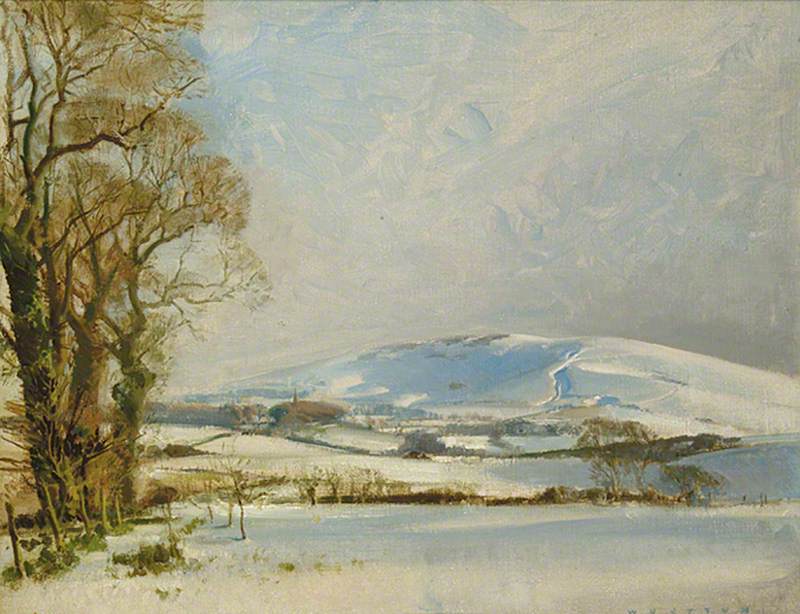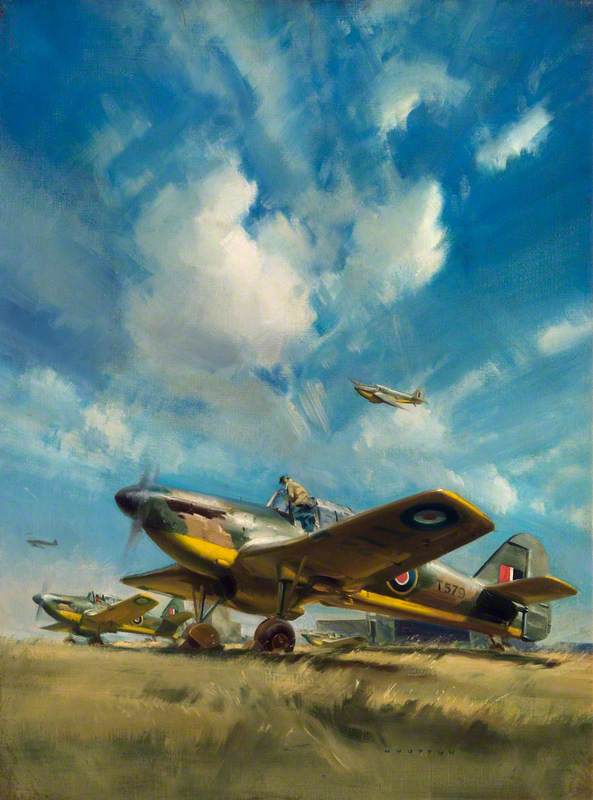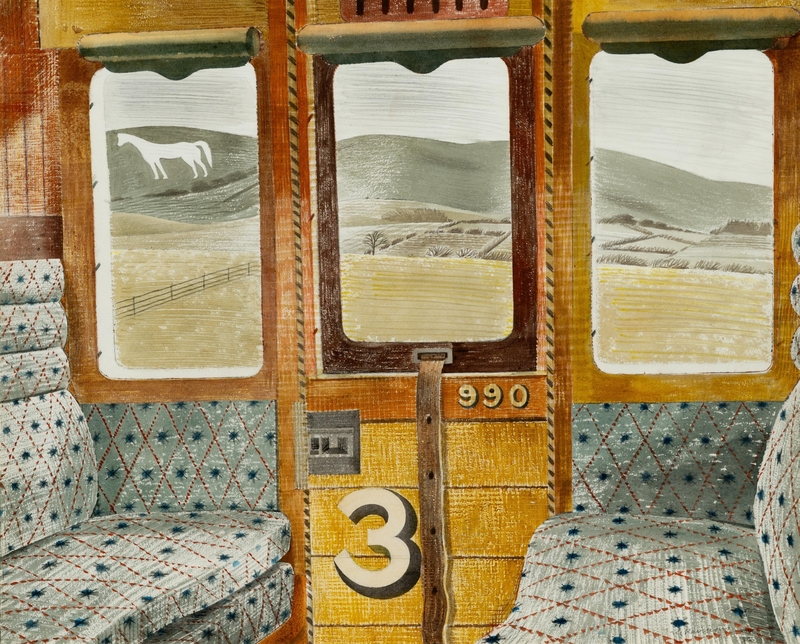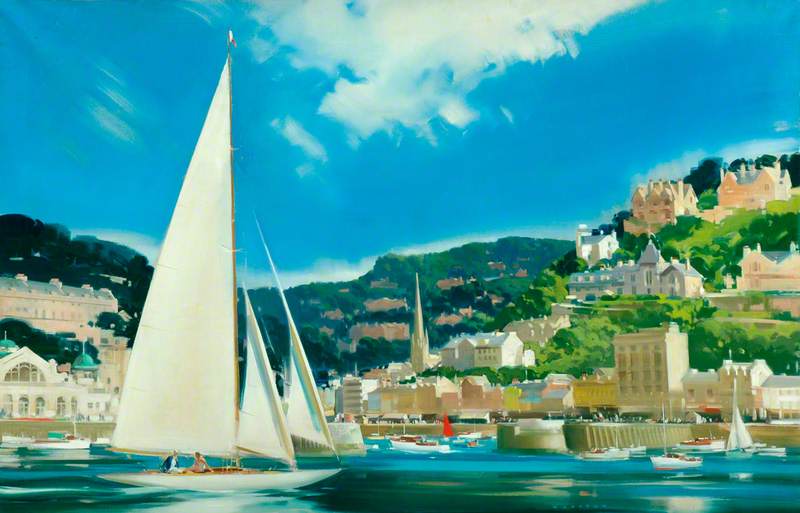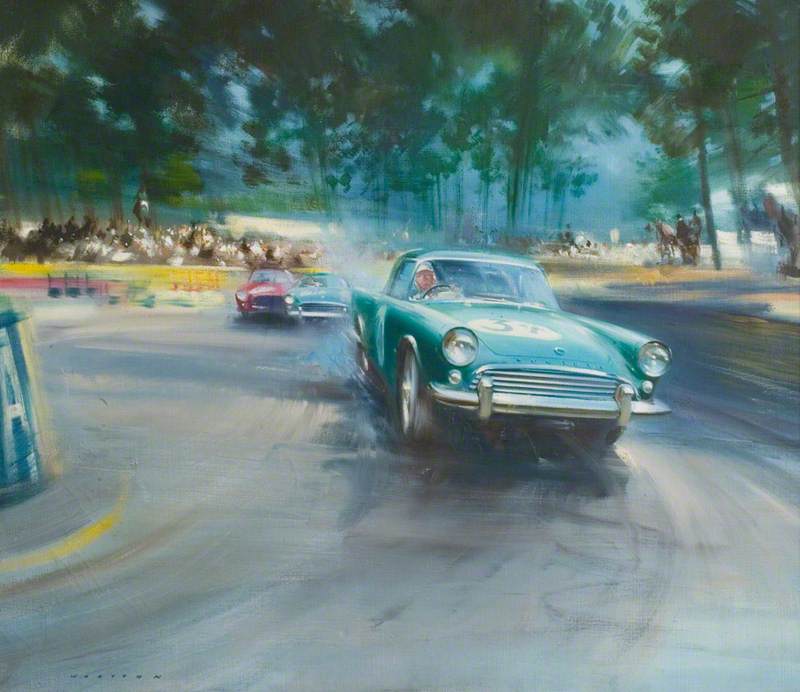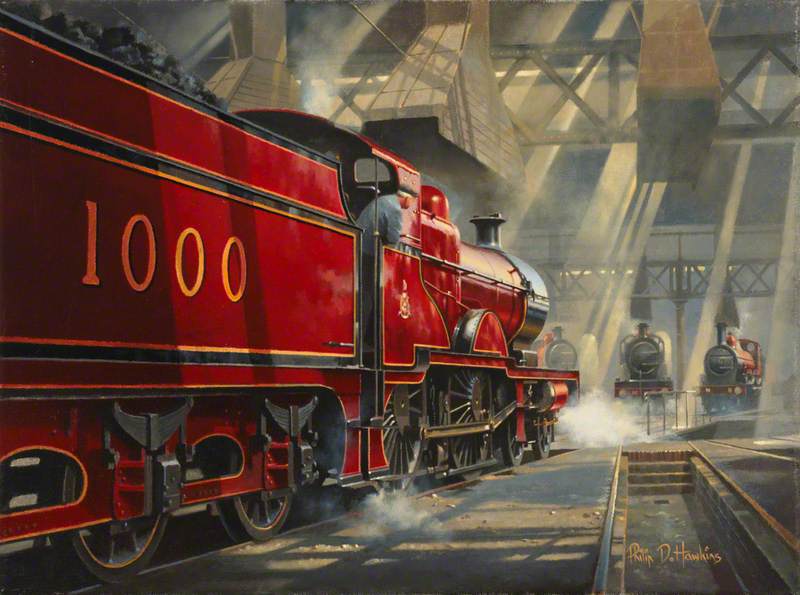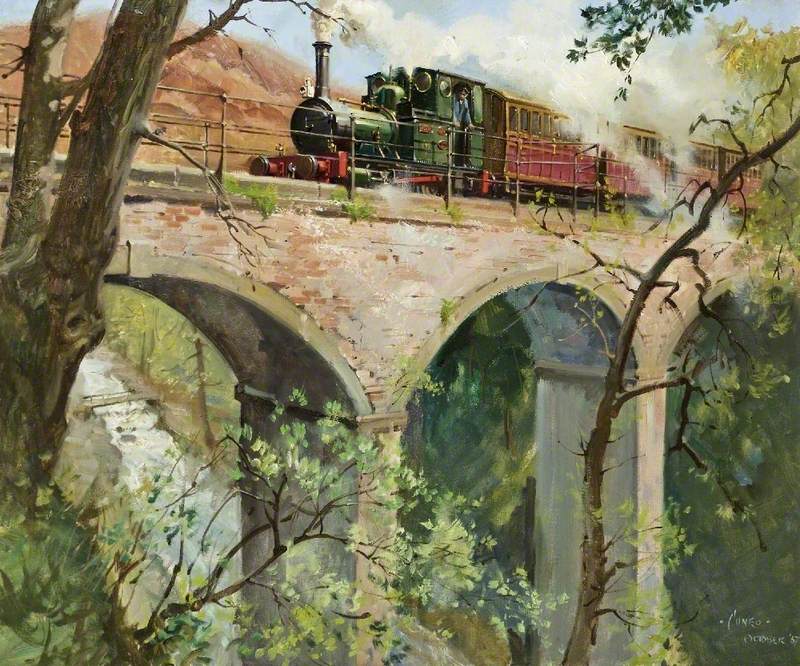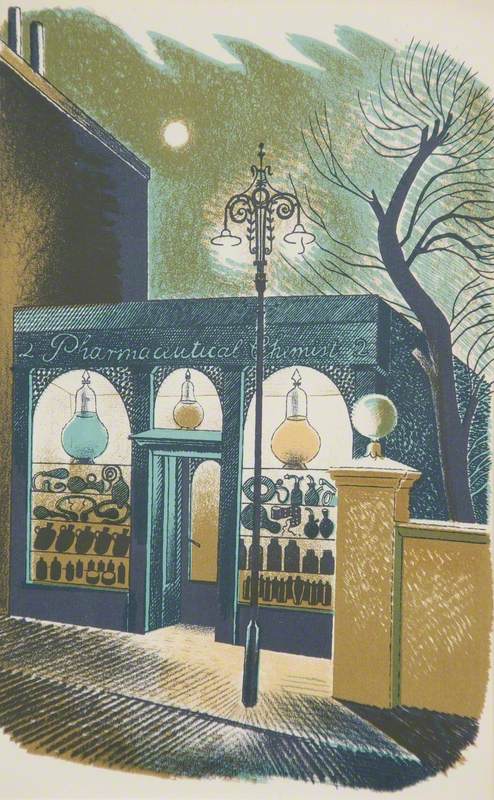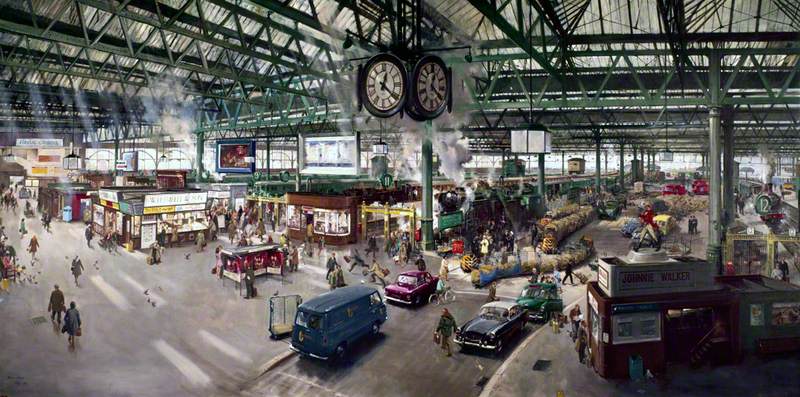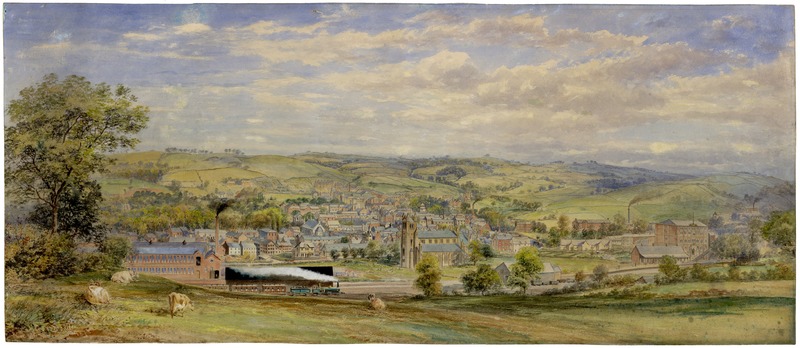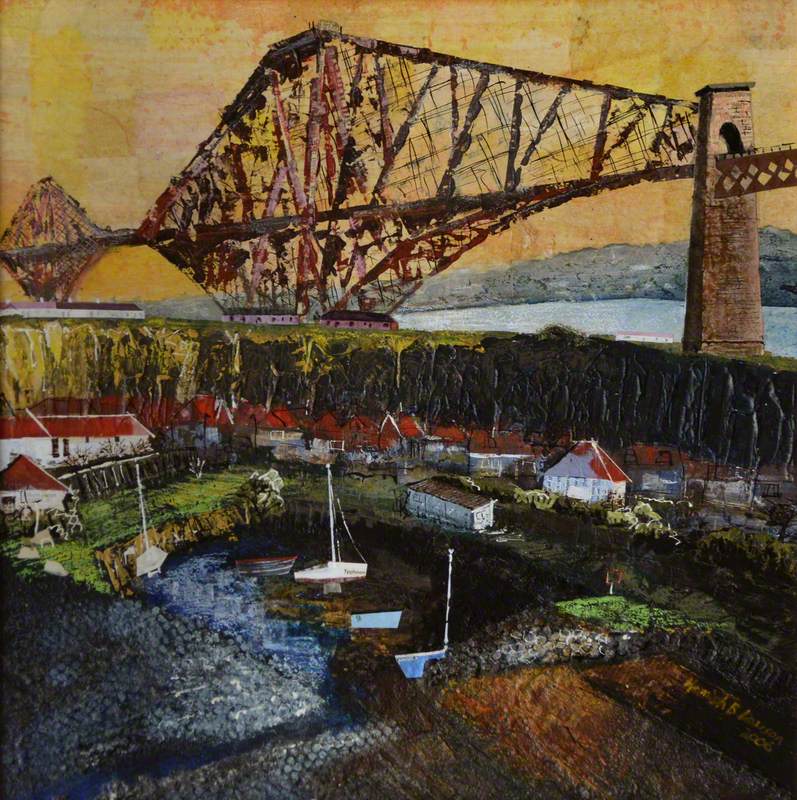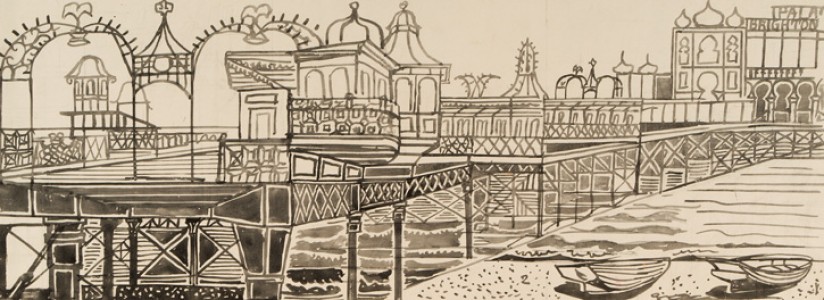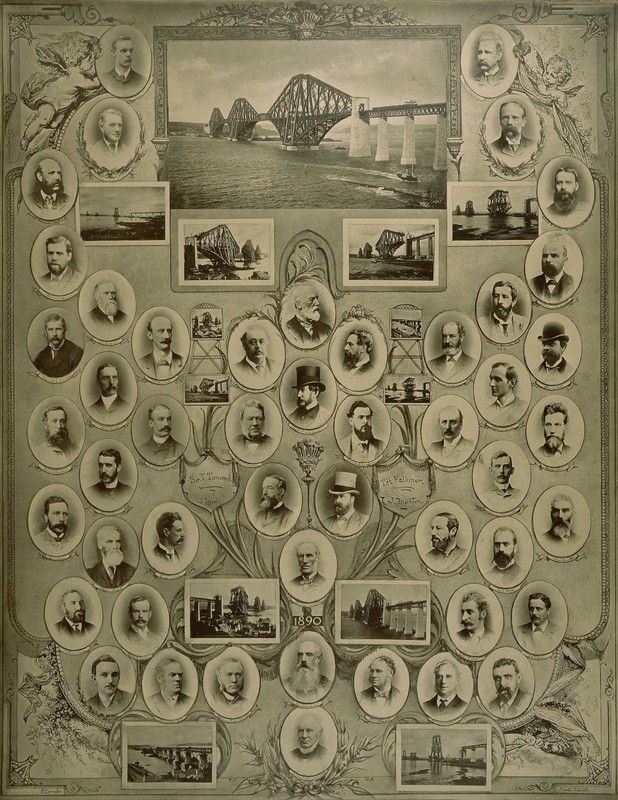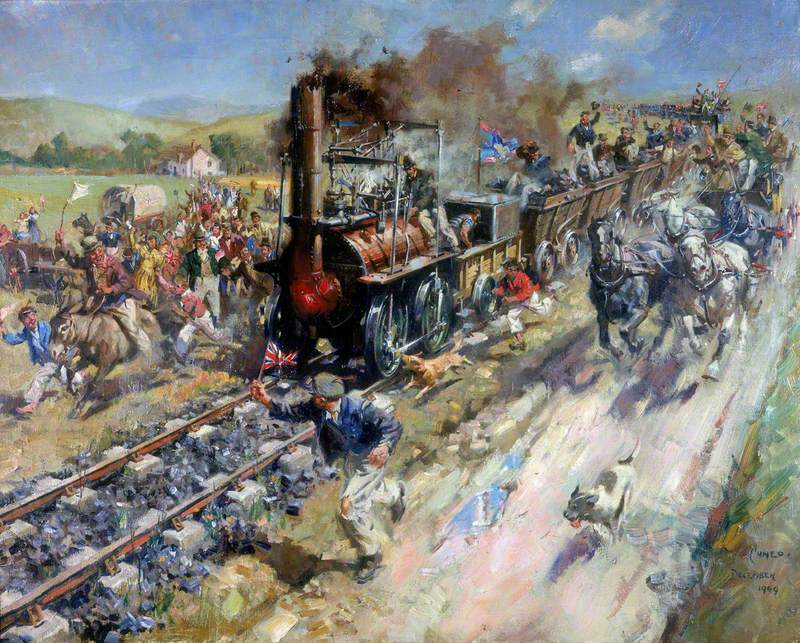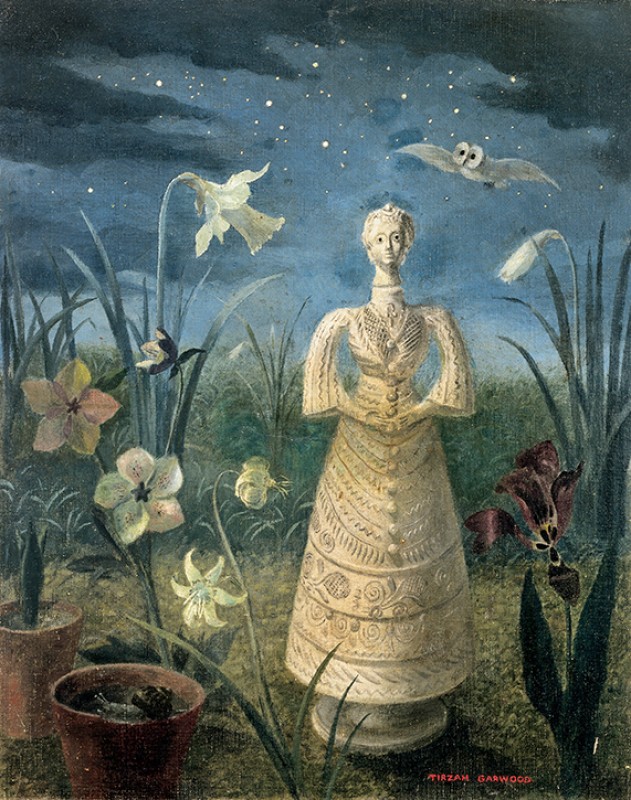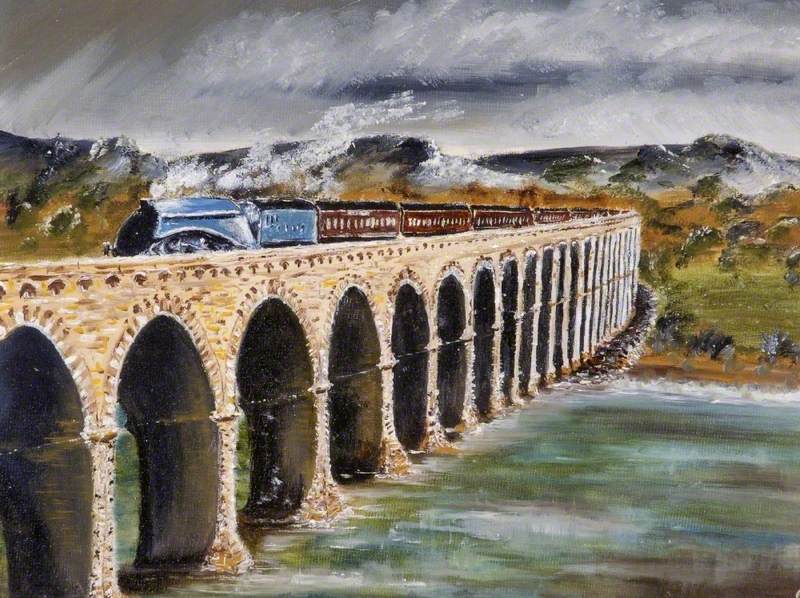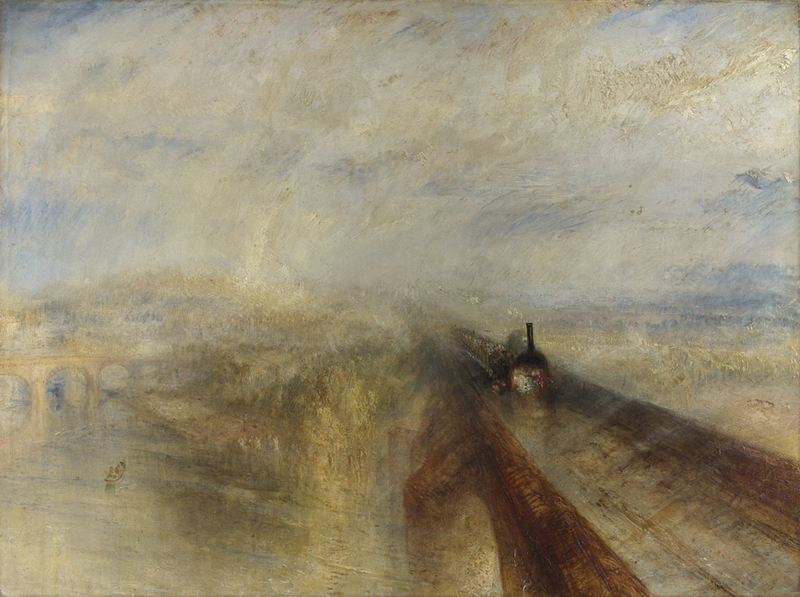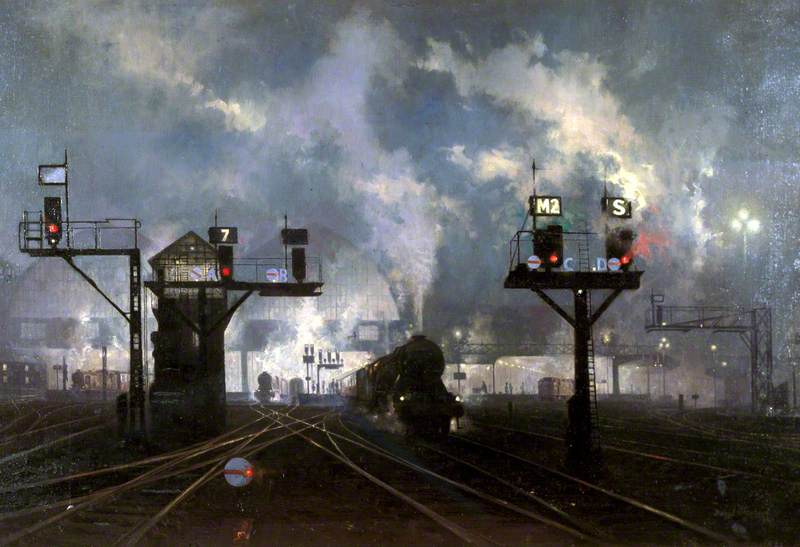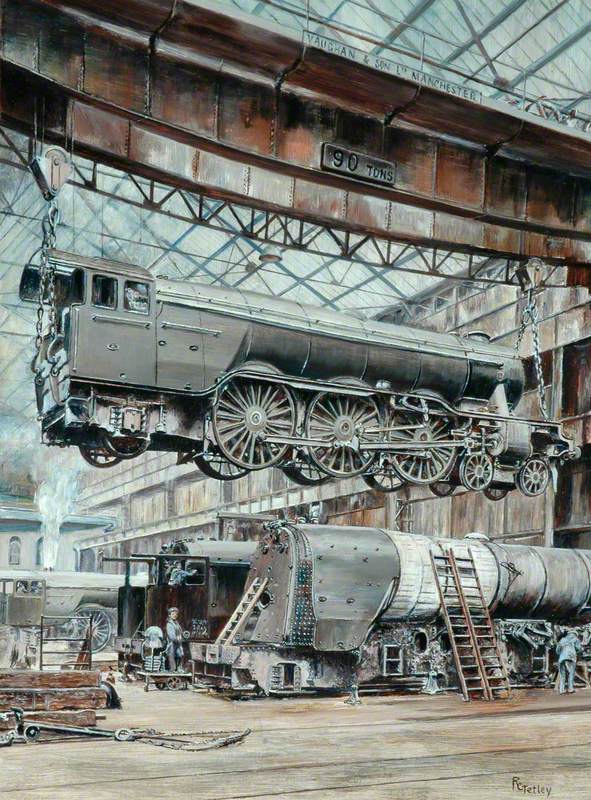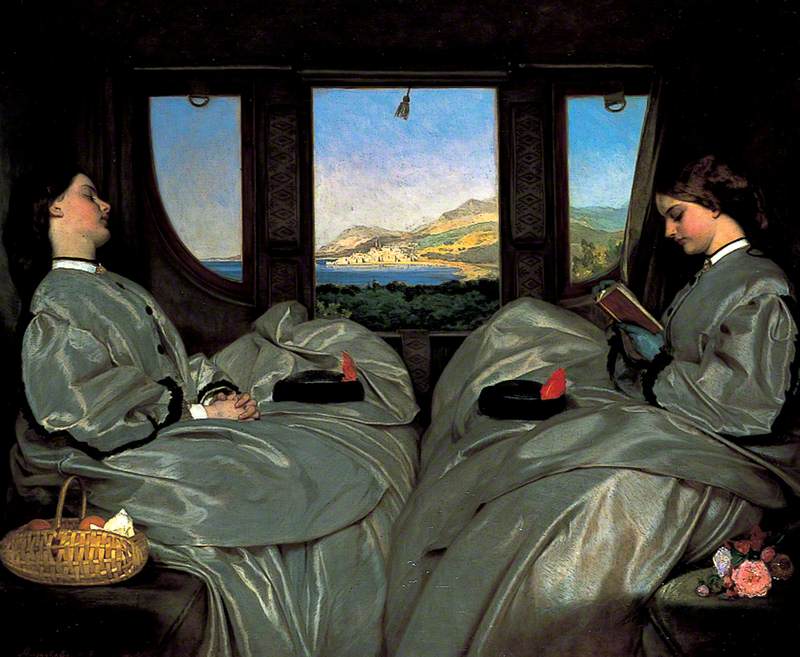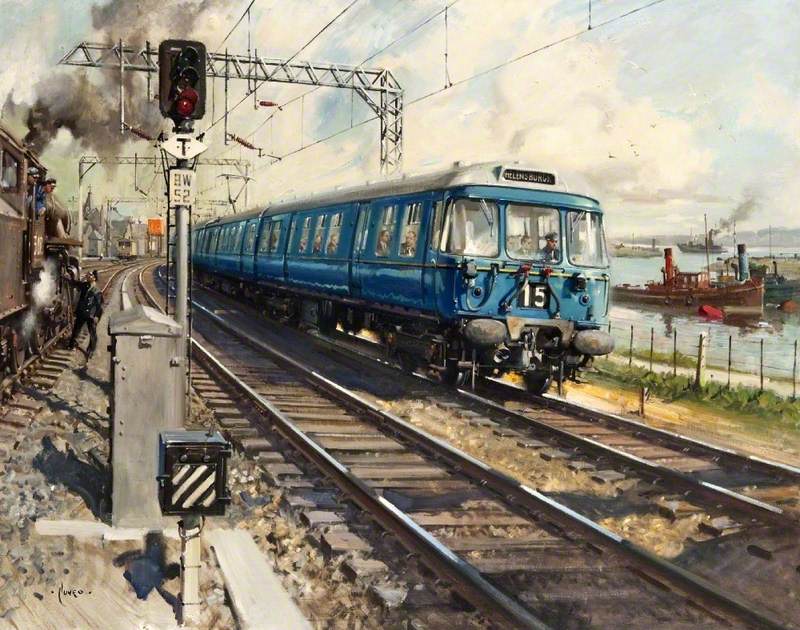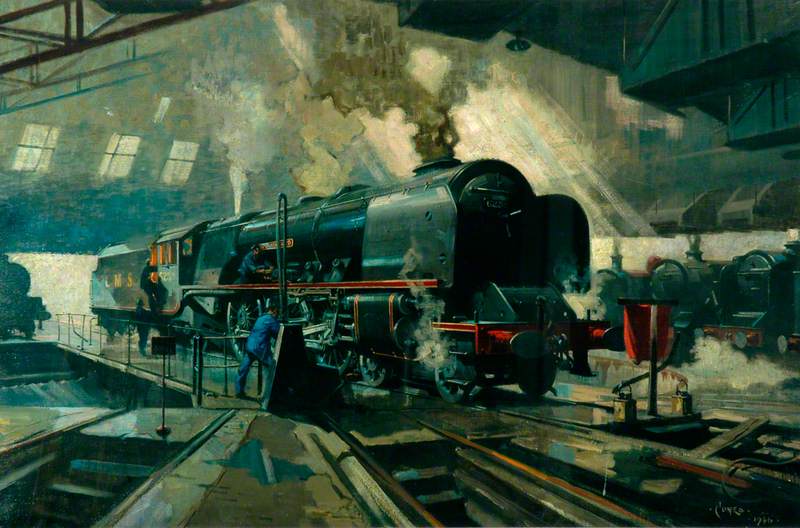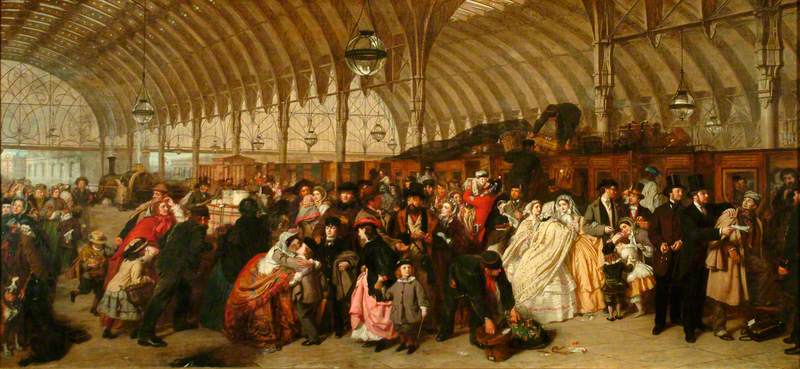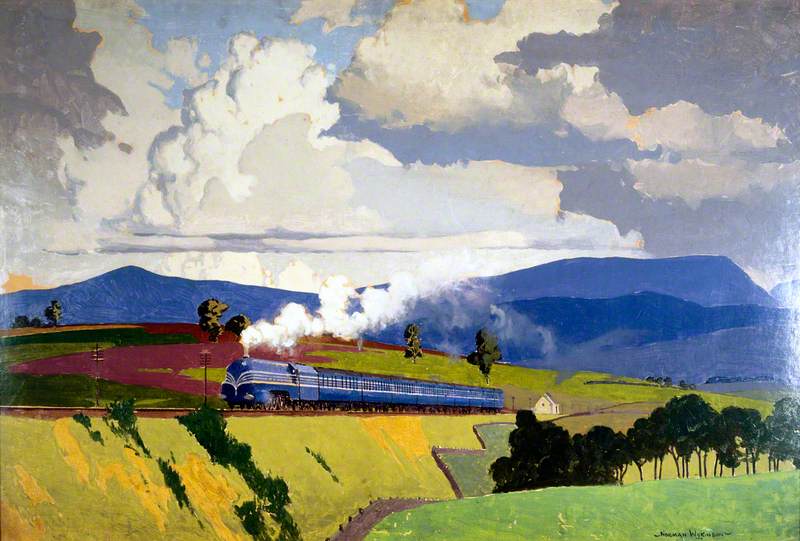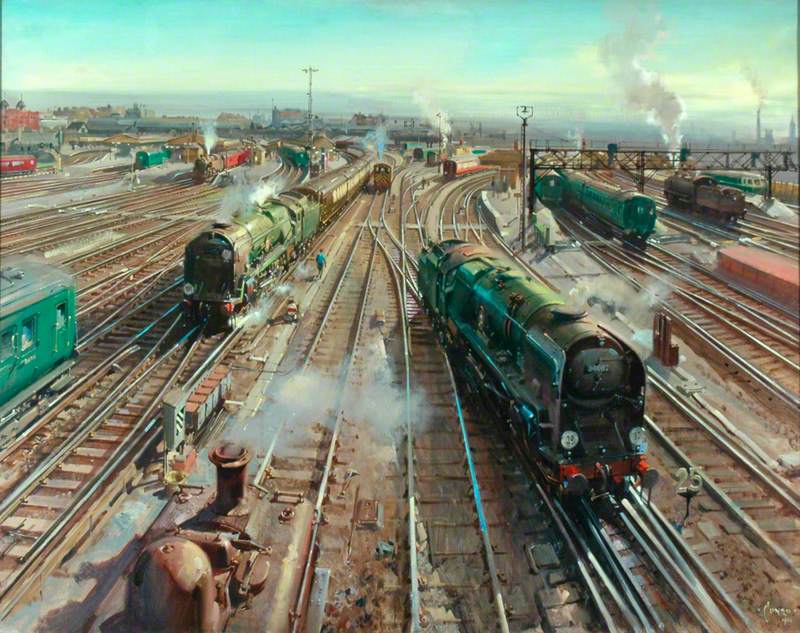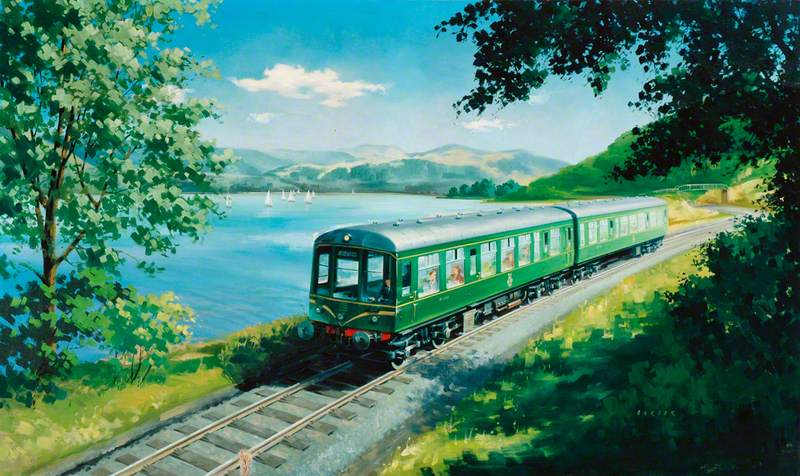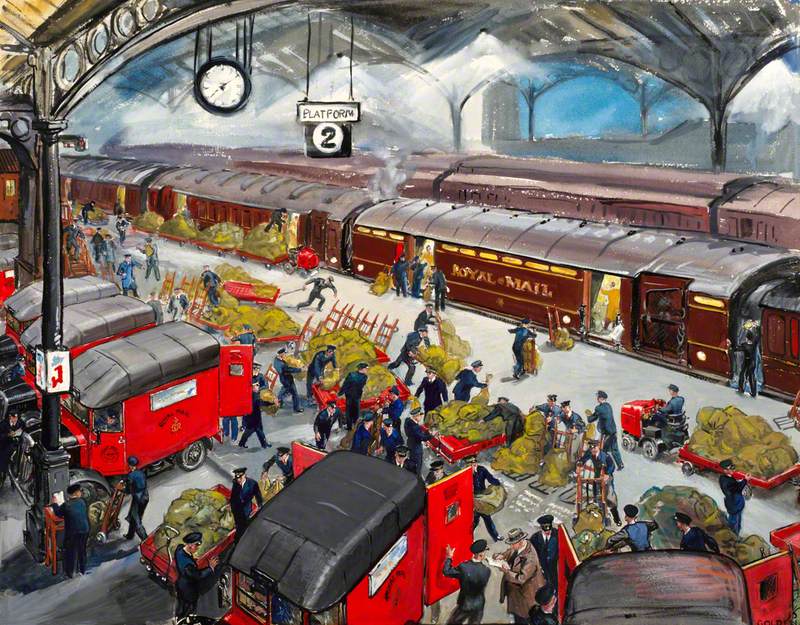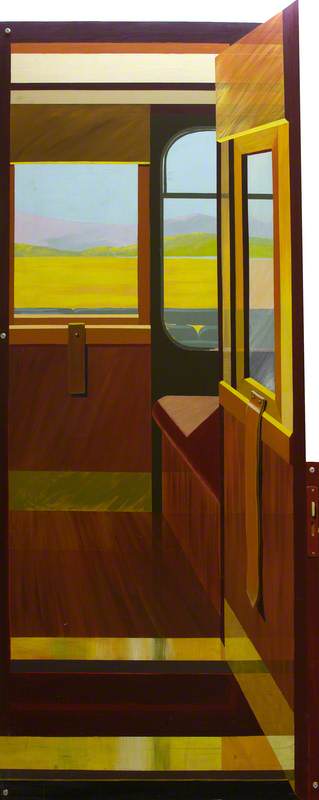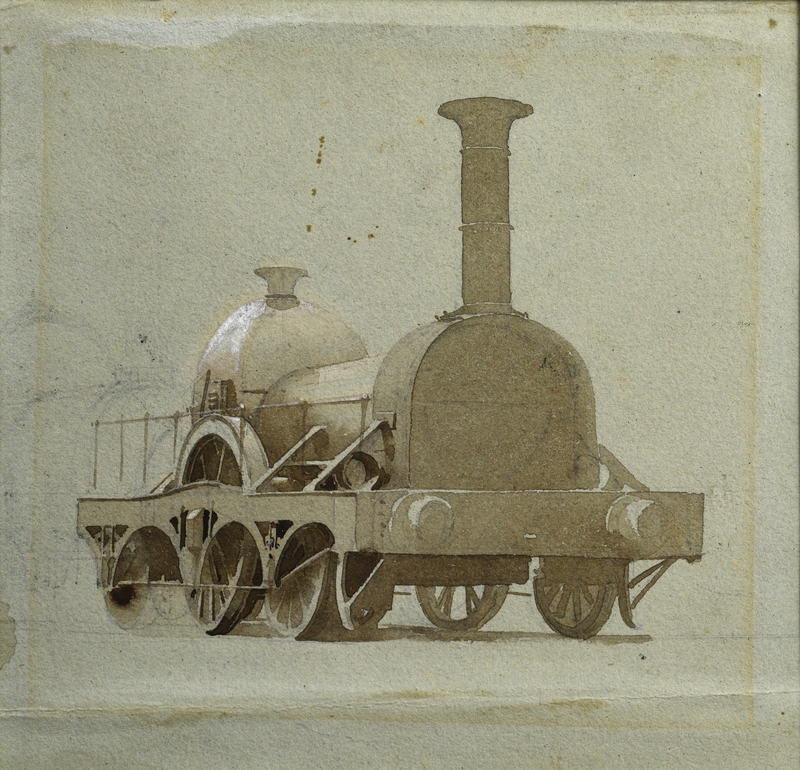This artwork is one of the top 20 UK railway artworks voted for by the public as part of Railway 200.
Travel posters evoke a bygone era. They have been transformed from flimsy, disposable advertising materials into cherished and collectable art objects. Frank Wootton's travel images are sought-after ephemera celebrating a bygone age. Most famous for his attention to detail in plane and car paintings, Wootton's travel posters are quite different. These are romanticised, composite images: an eternally bright sky, a mountain here, a castle there, a meandering river, a glorious steam engine, all blending seamlessly into a traveller's dream.
By Rail to Wales
(British Railways poster artwork)
Frank Wootton (1911–1998) 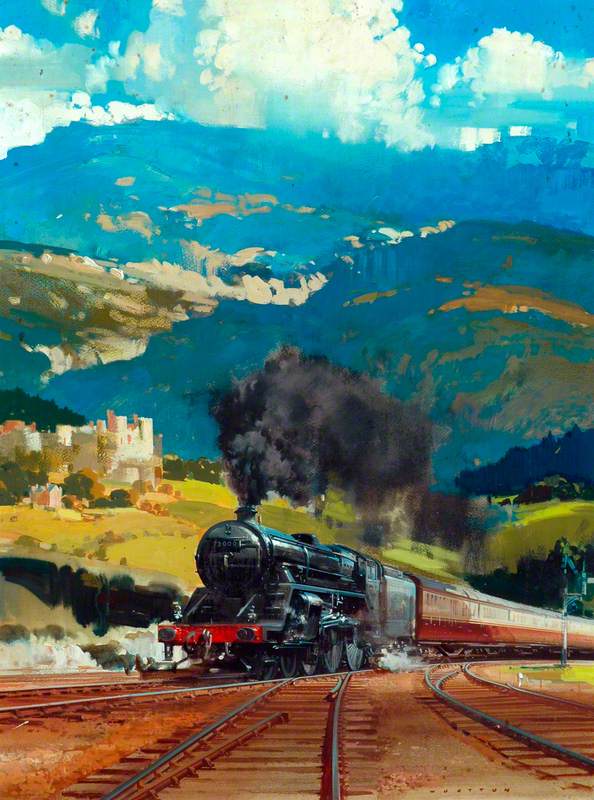
It's easy to see why this image has made it into the top 20 of the Railway 200 competition. It is a stunning visual invitation to explore Wales. See the grandeur of the landscape – those rugged mountains, the lush hillside pasture, the majestic castle, that magical light in the clouds. And in the centre of the image – an epic, thundering iron machine, in its black livery, with a dense sulphurous cloud of steam rising from the engine smokestack. Doesn't it look like the breath of a great Welsh dragon?
And look to the bottom edge of the poster – the rail tracks branch out in three different directions, pulling us in, thirsty for adventure. What further delights lie just out of sight?
But this is an imagined scene, a fantasy Wales. There are only two castles on the Cambrian Coast rail route: Harlech and Criccieth. Neither castle looks exactly like this, although Harlech is a perhaps closer match. The hills behind are shrouded in cloud, so we can't identify any features, but the hills behind Harlech (although beautiful) are not this big. In this art, the imagination takes centre stage.
Wootton's work on planes was the art of form and function, an authentic historical record. But through the 1950s his work on travel posters unleashed a creative and playful inventiveness.
Wales, Travel by Train
(British Railways poster artwork) c.1960
Frank Wootton (1911–1998) 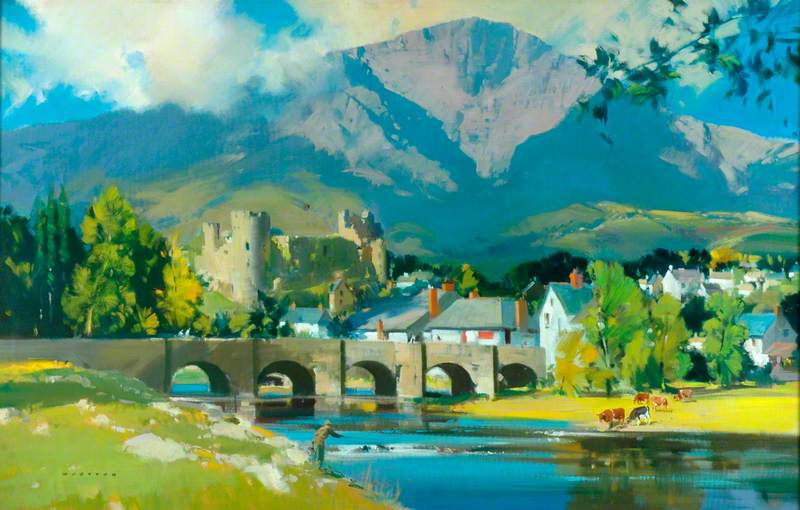
Take a close look at the work above. A solitary fisherman dreams of his big catch on the riverbank. On the other side, cows drift to the clear bright water to drink. A stone bridge crosses the river to an idyllic village. Beyond the bridge is a ruined castle, probably Harlech. Dominating the background is the instantly recognisable cleft of the mythical mountain Cader Idris.
However, this distinctive mountain has no castle nearby – Harlech is in fact some 30 miles north. Harlech Castle is not flanked by a river, it sits on a rocky knoll next to the sea. But don't be fooled into thinking these are errors or geographical mistakes, this is a deliberate choice, where Wootton works his advertising magic. He knew his travel posters were meant to evoke wanderlust and inspire adventure. In truth, when called upon to reproduce a place in its true and exact form, he was eminently capable. See, for instance, this wintery Sussex landscape from 1945.
Raised by his father after his mother died young, Wootton grew up steeped in ideas of global travel. His father was a merchant seaman, so probably brought back many stories of exotic climes and cultures. Wootton attended Eastbourne School of Art from the age of fourteen, where he won a travel scholarship and a gold medal. With his grand prize of £25, he travelled around Germany.
On his return to England, he settled on a career in commercial art before applying to join the Royal Air Force. Although he wanted to fly and fight, in fact, it was his artistic skill the RAF sought, so Wootton worked as an official war artist throughout the Second World War. After the war, he moved on to India and Burma with the RAF and is today considered one of the finest aviation artists.
But war artist wages came nowhere near covering the living expenses of a man consumed by a passion for painting planes, trains and automobiles across the globe. And so, Wootton connected with commercial clients for work. At Eastbourne he had been taught by Eric Ravilious, also a war artist. Ravilious painted, but he also illustrated books, produced wood engravings and was a talented designer. One of his works is in the top 20 of the Railway 200 competition. Wootton clearly learnt a lot from his tutor about the needs of the commercial art market.
Wootton looked to advertising, and in particular to the railways. From the late 1800s the number of rail companies had surged, and mass transportation had become an everyday occurrence. Fast forward to the twentieth century, when industrialisation, the right to holidays for workers and an increase in disposable income, had led to huge social change. Railway companies saw an opportunity and began to advertise travel and tourism. The message to the public was loud and clear – leave behind the dust and smog of the city and head to the pure air of coast and country!
Steam trains still run in Wales on a number of lines, such as the Talyllyn Railway
2025, photograph by Candy Bedworth 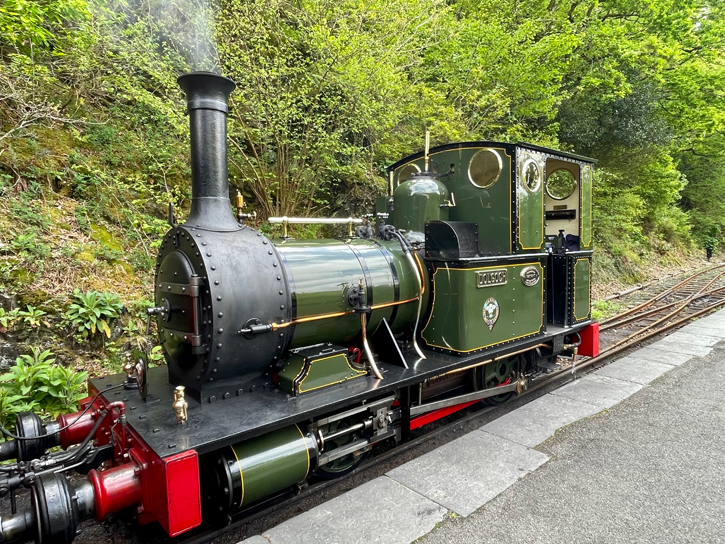
Steeped in myth and legend, Wales was a popular subject for travel posters due to its wonderfully diverse and beautifully scenic landscape. This small country has a long coastline, rolling hills, forestry and woodland, mountains, rivers, quaint villages, castles and historic towns. The railways needed posters to showcase Wales as a holiday destination, and to promote rail travel as the access point. Frank Wootton definitely fulfilled that brief! He did the same for Devon in this stunning Torquay seaside scene.
The development of lithographic printing (and later offset printing) allowed for the mass production of large format advertising posters. This printmaking process produces high quality prints with vibrant colours, at cost-effective prices. Litho printing was actually invented in Germany, back in 1796, but colour lithography did not become popular until the late 1800s, when its commercial use was discovered. This powerful form of visual communication transformed advertising. Cars were a great love of Wootton's, and he also worked on advertisements for quite a few vehicle manufacturers.
Many transport artists pride themselves on obsessive attention to detail, every rivet, handle and brass fitting true to life and time-period. And this is true of Wootton's incredible images for the RAF. But for his rail advertisements, he could let his imagination take the lead. A castle may be in the wrong county, or be sited beneath the wrong mountain, but that doesn't matter!
What we want from these posters is an essence, a feeling, a sense of wonder. And Frank Wootton gives us that in abundance. He speaks to our imagination and our love of history and landscape. In his rail posters, Wootton the artist and Wootton the advertiser blend seamlessly to create visual magic. Don't you just want to steam ahead to Cymru, the land of myth and legend, right now?!
For those who do, the Cambrian Line is one of the most scenic in the UK, spanning 120 miles of exceptional Welsh landscape.
Candy Bedworth, writer
This content was funded by Railway 200
About Railway 200
Railway 200 is a cross-industry, UK Government-backed, partner-led celebration of the 200th anniversary of the birth of the modern railway, commemorating the opening by George Stephenson of the Stockton and Darlington Railway in the North East of England in 1825, a journey that changed the world forever. It explores the past, present and future of rail, and how it has shaped our lives and livelihoods. Numerous activities and events are planned throughout 2025, many of which are listed at www.railway200.co.uk
